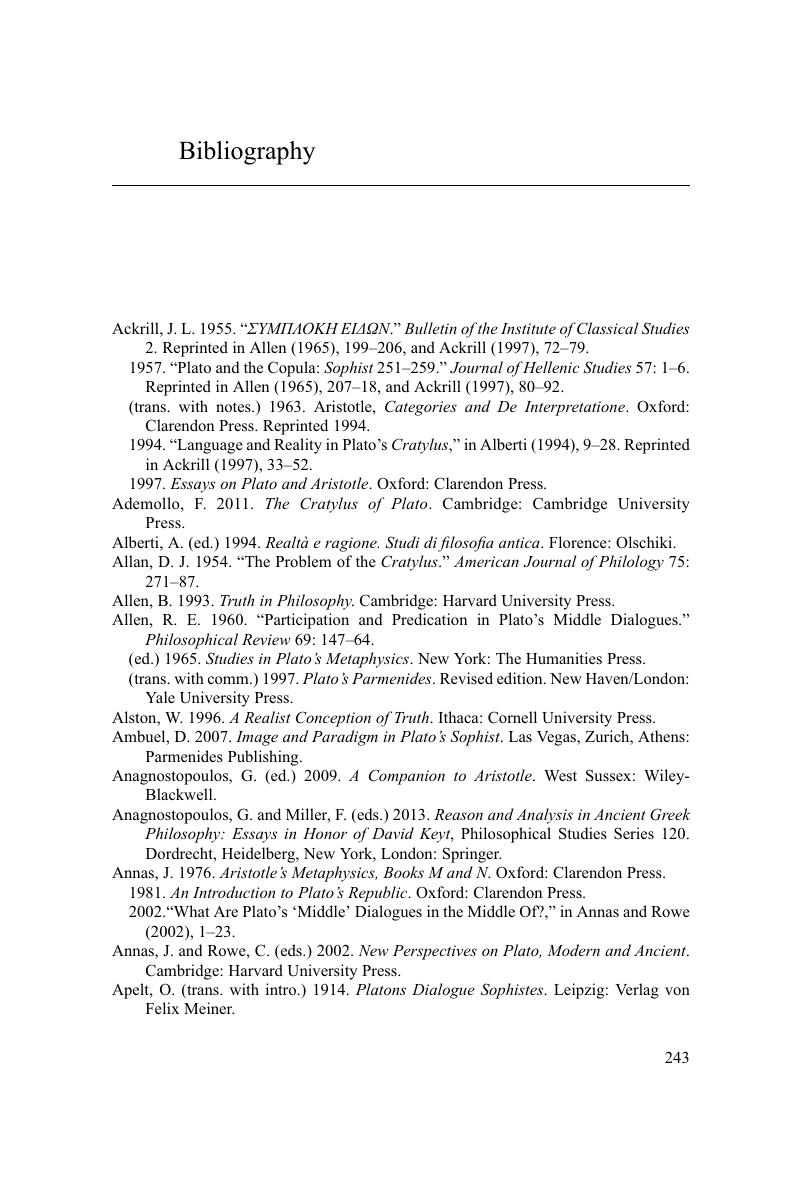Book contents
- Plato on the Metaphysical Foundation of Meaning and Truth
- Plato on the Metaphysical Foundation of Meaning and Truth
- Copyright page
- Dedication
- Contents
- Book part
- Note on the text
- Glossary
- 1 Introduction
- Part I Stability
- Part II Combination
- Part III Truth
- Bibliography
- Index locorum
- General index
- References
Bibliography
Published online by Cambridge University Press: 05 May 2016
- Plato on the Metaphysical Foundation of Meaning and Truth
- Plato on the Metaphysical Foundation of Meaning and Truth
- Copyright page
- Dedication
- Contents
- Book part
- Note on the text
- Glossary
- 1 Introduction
- Part I Stability
- Part II Combination
- Part III Truth
- Bibliography
- Index locorum
- General index
- References
Summary

- Type
- Chapter
- Information
- Plato on the Metaphysical Foundation of Meaning and Truth , pp. 243 - 258Publisher: Cambridge University PressPrint publication year: 2016



